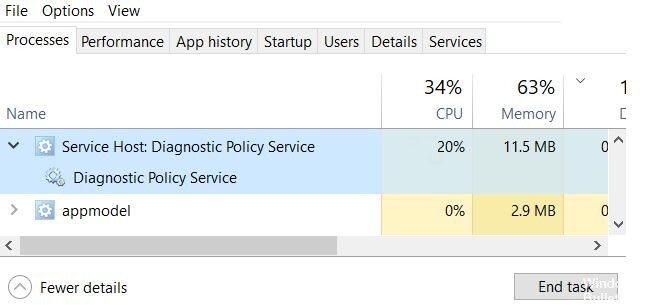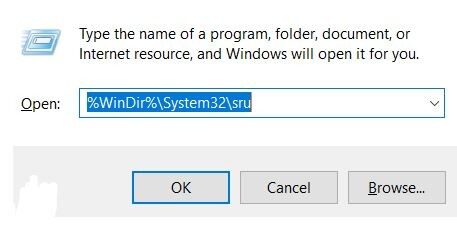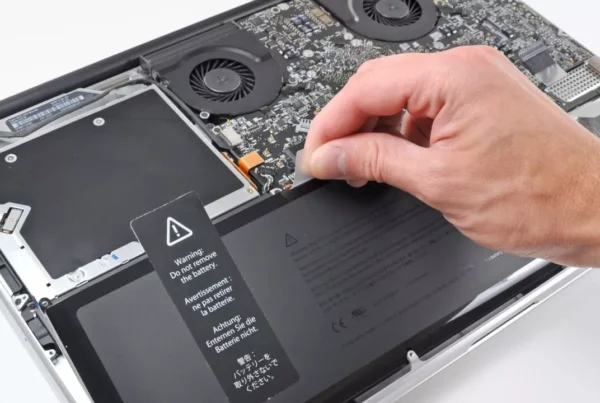RECOMMENDED: Click here to fix Windows errors and get the most out of your system performance
As you may know, there are a number of processes and services active in the background that help Windows run smoothly. Most of these background processes/services consume a minimal amount of CPU and RAM. However, there are times when a procedure is interrupted or corrupted and consumes many more resources than usual, leaving little room for other foreground applications. The Diagnostic Policy Service is one of those processes that is known to overload system resources on rare occasions.
Diagnostic Policy Service is one of the common Svchost.exe (service host) processes. It is responsible for detecting problems with many Windows components and solving them. The service attempts to automatically resolve detected issues when feasible and saves diagnostic information for analysis when not feasible.
Because diagnostics and automatic troubleshooting are important functions for the proper functioning of your computer, the Diagnostic Policy Service has been configured to start automatically when you start your computer and keep it active in the background.
The exact reason why it consumes more CPU power than expected is not known, but according to possible solutions, the culprits could be a corrupted service instance, corrupted system files, a virus or malware attack, log files of large events, etc.
What Causes High Host CPU and Memory Consumption: Diagnostic Policy Service
The SRUDB.dat file is related to the diagnostic policy service. This file can sometimes become very large and cause high memory consumption. If we delete this file, the problem of diagnostic policy service consuming a lot of CPU power will generally disappear.
The exact reason why it is consuming more CPU power than expected is not known, but based on possible solutions, the culprits could be a corrupted service instance, corrupted system files, virus or malware attacks, log files. big events, etc.
How to Fix Host Issues: Policy Diagnostic Service High CPU and Memory Usage
General Tips
- First, try to complete the task procedure and let it restart. See if the procedure now shows high CPU usage. If it still does, restart your computer.
- Run a system file scan or run DISM commands to fix inbox corruption.
- Try creating a new user account and see if the problem persists.
- Make sure you install the latest Windows updates.
- Run the system troubleshooter.
- Update your computer's BIOS firmware to the latest version.
- Make sure the system has the latest drivers installed.
Using File Explorer
- Press W8K + R and enter the following in the Run dialog box, then press Access: % WinDir% System32sru.
- In the open sru folder, find the SRUDB.dat file and delete it.
- Close File Explorer and reboot the system.
Note: If the SRUDB.dat file cannot be deleted because it is used by the Diagnostic Policy Service, you must first set the Diagnostic Service startup type to Disabled. Then you can delete the file without any problem.
Additionally you can delete the file from the command line in recovery mode.
RECOMMENDED: Click here to fix Windows errors and get the most out of your system performance
Frequent questions
Close any programs/applications you don't need. If your computer is consuming a lot of memory, you can try closing some unnecessary programs and applications to fix this problem. Open Task Manager by right-clicking on the Windows icon and selecting “Task Manager.”
- Registry key: Press Win + R.
- Fix the driver issue: Open “Device Manager” and “Check for hardware changes”.
- Configure Windows 10 for maximum performance. Right-click the “Computer” icon and select “Properties.”
- Disable startup programs. Press "Win Key + R."
- Defragment your hard drive by pressing Win key + R.
Disabling the Windows Diagnostic Policy Service prevents certain file system I/O operations and can slow the growth of a virtual hard disk such as a snapshot or linked clone. Do not disable the Windows Diagnostic Policy service if your users need diagnostic tools on their workstations.
- Press Ctrl + Shift + Esc to open Task Manager.
- In the Processes tab, scroll down and find the Host: Diagnostic Policy service.
- Click Stop Task and make sure the Cancel untrusted data and Shut down alternatives are selected.








